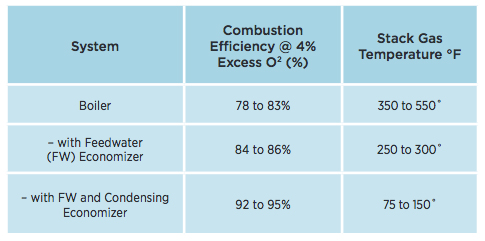Installing a condensing economizer can improve overall heat recovery and steam system efficiency by up to 10%.

Given 8,000 hours per year of boiler operation, and a fuel cost of $8.00/MMBtu, the annual energy recovered is valued at: Annual Savings = 7.55 MMBtu/hr x 8,000 hrs/ yr x $8.00/MMBtu/0.83 = $582,170
That’s over a half million dollars in annual savings – from just one project! SO WHY DOESN’T EVERYONE DO IT? Many boiler applications can benefit from this additional heat recovery, such as district heating systems, wallboard production facilities, greenhouses, food processing plants, pulp and paper mills, textile plants, and hospitals. So why don’t they all do it? Condensing economizers require site-specific engineering and design, and a thorough understanding of the effect they will have on the existing steam system and water chemistry. That’s where Campbell-Sevey’s expertise in plant steam and recovery systems pays off. Our team provides utility system studies, application engineering, installation supervision, and on-site training. If you want to increase steam system efficiency by 10% or more and start seeing revenue go to your bottom line instead of up your chimney, contact Campbell-Sevey today.Improve Waste Heat Recovery with a Condensing Economizer
